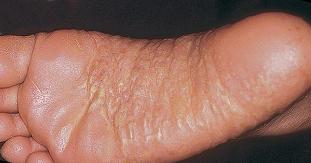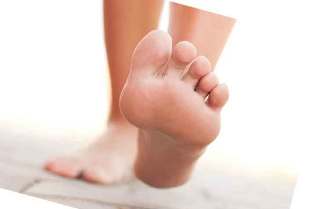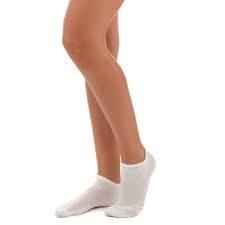Hand foot psoriasis affects the palms of the hands and soles of the feet, and the disease is an autoimmune disease state.

The psoriasis on the palms of the hands and feet, together with the localization of the process on the scalp, is considered to be one of the most common forms of the disease. That represents about 14% of the cases of a skin condition.
The causes of the development of the disease
Even if palmar-plantar forms of psoriasis is not peculiar to the association at the age between 15 and 35 years of age observed a higher frequency of developing the disease. There is a link with ethnicity. It is said that people of caucasian ethnicity in the age of 50 years significantly increases the risk of developing this disease.
The exact causes of the pathological state has not been fully clarified and still believes that the disease is based on the treatment autoimmune. During normal operation of the immunity, a person receives protection from a variety of alien agents: viruses, allergens, protozoa, and other microorganisms.
In psoriasis, an error occurs in the body, after which the immune system begins to produce substances hard against its own cells and tissues. An excessive amount of T-lymphocytes (the main cells of the immune system) and macrophages leads to the development of an inflammatory response and excessive proliferation of skin cells, because, and it is observed the characteristic symptoms and the emergence of hyperkeratosis.
Note! Hyperkeratosis is an excessive thickening of the epidermis — the outer layer of the skin.
Some studies indicate a role of the factor of inheritance. For example, about 10% of the population inherit the genes associated with psoriasis and only 3% of them develop the disease. These statistical data suggest the presence of other, more thorough understanding of the causes of the disease.
Additional risk factors are:
- The stress and emotional lability (sensitivity).
- Smoking and taking drugs.
- The background of the disease, with a strong impact on the immune system.
- Infections, frequent injuries and cuts on the palms and soles.
In a 2006 study it was indicated on the communication, pathology, dermatology with cardiovascular diseases and other diseases: hypertension, diabetes, and hyperlipidemia.
The results of the experiments to the end were not clear. For a full understanding of all the processes, the study of this topic continues and more research is needed.
The Trigger of the disease (factors, have an effect on the disease, but does not lead to it directly) can be the following:
- A burn solar;
- Bites of insects;
- The exposure to allergens;
- Common bacterial infections such as pneumonia or a sore throat;
- Viral diseases, including HIV infection;
- Inflammatory conditions of varying severity: bronchitis, rinofaringite;
- Severe alcoholic intoxication;
- Obesity.
Diagnosis palmar-psoriasis plantar

Despite the rapid development of modern medicine, still install the software of psoriasis on the palms of the hands, perhaps with a visual examination of the skin doctor without special equipment. Based physical examination "of a psoriasis triad", an event that can be observed with a light scrape shavings of the affected areas of the body.
The doctor draws attention to the history of the disease, as well as some constantly allowed drugs may be triggers for the development of the disease:
- Indomethacin and other nonsteroidal anti-inflammatory drugs (NSAIDS);
- Lithium and antimalarial drugs;
- The abrupt suspension of corticosteroids;
- The reception of penicillin, hydroxychloroquine.
In difficult cases, we recommend a complete examination, which includes the laboratory analysis of the blood and the scan of the ultrasound, as well as the exclusion of a fungal infection using mycological diagnostics. When the witness made a biopsy of a suspicious hearth of the skin.
The symptoms and the first signs of palmar-psoriasis plantar
Among the main types of diseases, there are five variants. When in 90% of cases you look at the visual feature of the clinical picture.
As it seems hand foot psoriasis? The patient on the palms of the hands and soles of certain psoriatic plaques, red scaly patches on the skin, thickened, ready to peeling. In outbreaks a person feels itching, fever, and pain of varying intensity; in some cases, the skin crack and bleed.
And impact on the formation of your nails:
- In the nail plates may appear to be defects of the hole;
- The nail thickens and screens;
- Changes its form.
Hand foot type of disease occurs as part of a general process, but is only limited to the skin of the hands and feet. Psoriasis soles makes it difficult to walk and wear shoes. Damage on the hands can not only interfere with the execution of any work, but also to impose a negative impression of the relationships with the people. Common situations, and a sort of welcome for the hand, can be clunky, that it causes inside of you, and the social, the difficulty of a person to the development of social phobia.
The distinctive feature of this form of the disease is the presence of species of the process, which can be called the following terms:
- Hand and foot pustular psoriasis Barbera;
- Purulent psoriasis;
- Dermatitis pustular.
Listed skin disorder causes the formation of clusters (clusters) several pustules in the field of platelets. In general, this eruption is very similar to a pimple. It is worth mentioning that this type of disease is quite crude with the light methods of treatment, and often requires an integrated approach to therapy.
Please note! Pustular psoriasis of the palms and soles requires the treatment of antibacterial drugs when you connect a bacterial infection.
Phase palmar-psoriasis plantar

As in all forms of the pathological process, palmar-plantar localization is characterized by three clinical phases:
- In the initial phase. The appearance of skin rashes on the hands and feet. The platelets have a characteristic red color, you may experience whitish hidradenitis of power; the patient's discomfort intense itching. The elements of the eruption are blended in large bags. Their number depends on the individual characteristics of the disease.
- Stabilisation phase. The state does not progress, the new elements of pathological does not form, but the old still intact. Itching gradually disappears, and the staining of the platelets becomes less bright.
- The final stage. Accompanied by a decline in the elements, the itching is missing. The treatment becomes support, or is excluded at all; gives advice for the preservation of remission and prevention of relapse.
In some cases, the disease is classified elements of eruptions:
- A common form — a typical manifestation on the skin;
- The corneal shape accompanied by ipercheratosiche and typical red spots a little, or are absent;
- The Shape Barbera.
Methods of treatment
Hand foot psoriasis is a chronic disease that can appear again, regardless of the treatment. However, there are methods of therapy, allowing a reduction of the times of aggravation and the extension of the period of remission.
The main method of treatment is an attempt to avoid the rapid growth of the cellular elements that lead to the development of plaques, there is the anti-inflammatory therapy. An alternative technique provides immediate removal of flakes.
Since the skin on the palms of the hands and soles of the inspessita even in healthy people, treatment of this localization often involves a combination of methodologies and a more aggressive impact on the outbreaks.
In the first place for the psoriasis of the palms and soles that is assigned to the local treatment in the form of gels, ointments and creams:
- The analogues of the vitamin D;
- Ointments of corticosteroids;
- Retinoids;
- Anthralin;
- Special resins;
- Salicylic acid;
- Hydrating to reduce the swelling and relieve the inflammation.
The usual side effects are irritation, drying and thinning of the skin. Also can be made of sessions of phototherapy:
- Natural ultraviolet radiation from the sun;
- Artificial ultraviolet radiation with the help of special equipment;
- A excimer laser;
- Photochemotherapy.
It is important to know!It is very important to transition to natural phototherapy. It is recommended to start with 5-10 minutes of direct sunlight per day. Later you can gradually increase the exposure time of 30 seconds per day.
Drugs for the treatment of palmar-psoriasis plantar
Hand foot psoriasis include the treatment of oral contraceptive drugs in the more severe form of the disease:
- Methotrexate;
- Retinoids;
- Cyclosporine;
- Biological drugs that reduce the activity of the immune system;
- Thioguanine;
- Hydroxyurea.
The most frequent side effect of these drugs are problems with the gastrointestinal tract.
The course of the disease and the prevention
Heavy the course of the disease to a certain extent, can influence the development of serious danger to the health and the life of the patient: 58% increases the risk of myocardial infarction and 43% of stroke. The main complications in the immediate psoriasis the hands and the soles is psoriatic arthritis, and dystrophy of the nails.
National medical research center has defined a number of diseases that can be caused by a pathology of the skin:
- Representative autoimmune condition: Crohn's disease, celiac disease, sarcoidosis, and other;
- Ocular disorders: cataracts and glaucoma, but also of infectious processes;
- Increase in blood pressure;
- Parkinson's Disease;
- Diabetes mellitus;
- Diseases of the liver and of the kidneys;
- Osteoporosis;
- Depression.
In a note.During early treatment, and by respecting the necessary information, the possible impact of psoriasis, it is possible to reduce, and skin manifestations to reduce to a minimum.
Recommended prevention measures:

- Take daily bath with natural oils, salts and mild soap, do not contain artificial flavors and dyes;
- Use a moisturizing cream to the skin (in severe cases — twice a day), especially after the assumption of the thermal water. It is not allowed to use hard towels. Just attach the leather to a soft, dry cloth, then use a cream;
- You receive a sufficient number of sunlight. It is necessary to consult a doctor and choose the "middle way". Too weak insolation will not bring any noticeable effect, and too intense, increase the risk of developing skin cancer;
- Avoid triggers, such as smoking, alcohol consumption, stress, and infections;
- Use the juice of aloe. You need to run the lotion on the damaged skin several times a day. There are official studies that demonstrate the effectiveness of this plant in the fight with the inflammatory processes of the skin;
- Receive not less than three grams of omega-3 fatty acids per day. Include in the diet fish, nuts, flax seed oil, or use fish oil capsules. Fatty acids can reduce inflammation in the body;
- Helps the intake of some additives on the basis of barberry, tea tree oil or Dead sea salts.























